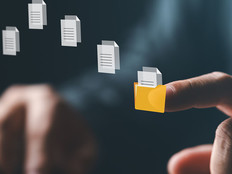The Benefits of Managed Print Services for the Federal Government
With limited IT staff, agencies need to focus on high-value work, including digital transformation and the shift to zero trust for cybersecurity. That’s why managed print services are taking off both in the Defense Department and in civilian agencies.
There are several key benefits to managed print services. With leased printers, agencies always have access to the latest technology when leases expire and it’s time for a new device; or, they can choose to own the devices at the end of the contract.
Agencies also save on consumables by working with partners to review how much printing is being done. Service providers can offer solutions that are both less expensive and more environmentally friendly, which is particularly valuable because many federal consumables are not the typical inkjet toner cartridge, but expensive products make for larger printers.
EXPLORE: Why improving endpoint security is the new normal.
Interestingly, the number of printers the federal government is using has not gone down, despite the change in work patterns stemming from the pandemic. In fact, the number has gone up, as has the use of color consumables.
This may be because workers coming into the office are doing so to collaborate on higher-profile projects that require maps, signage and other materials that need to be printed in color. Regardless of the reason, printing isn’t going away as a core government function.
Managed print services allow agencies to scale their printing up or down depending on the need, paying only for the amount they use. That gives IT leaders greater flexibility at a time when work schedules remain unsettled.
Printers Need to Be Secured in Federal Environments
No matter how agencies purchase or use printers, like other endpoints, they can become vectors for cyberattacks.
Printers that workers have in their homes can be controlled via embedded manufacturer software rolled out at the server level. With this, agencies can control who prints what and when, letting users print only what they have access to.
DISCOVER: How to keep mobile technologies safe with adaptive protection and device control.
Managed print services also allow agencies to get print analytics, which can help detect anomalies. For example, print data analysis might spot a user printing out a significant number of pages at midnight on a Saturday, which would be quite out of the ordinary.
For now, it seems that managed print services are becoming a desirable path forward for many agencies seeking to save money, one that also allows IT teams to focus on more valuable work than ensuring the printer has enough toner.
This article is part of FedTech’s CapITal blog series. Please join the discussion on Twitter by using the #FedIT hashtag.





.jpg)
.jpg)

.png)



